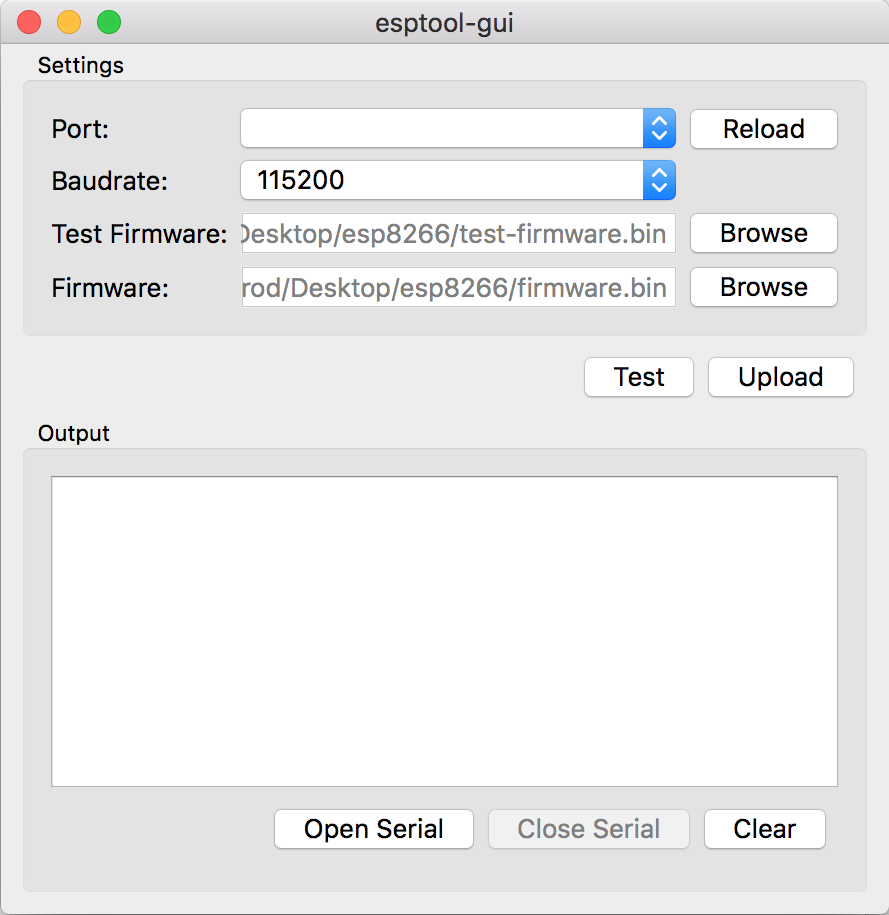kopia lustrzana https://github.com/Rodmg/esptool-gui
|
|
||
|---|---|---|
| tools-linux/tool-esptool | ||
| tools-osx/tool-esptool | ||
| tools-windows/tool-esptool | ||
| LICENSE.txt | ||
| README.md | ||
| esptool-gui-screenshot.png | ||
| esptool-gui.pro | ||
| esptool-gui.pro.user | ||
| esptool-gui.pro.user.d21aff1 | ||
| main.cpp | ||
| mainwindow.cpp | ||
| mainwindow.h | ||
| mainwindow.ui | ||
README.md
esptool-gui
A GUI for ESP8266 flash tool esptool-ck with basic features, geared towards being a production flashing tool.

Installing
You can download prebuilt binaries from the releases section.
Building
OSX
- You should have Qt5 and QtCreator developer tools installed in your system (https://www.qt.io/developers/). tested with Qt 5.6.0 and Qt Creator 4.0.0.
- Clone this repo and open
esptool-gui.prowith Qt Creator, build from there. - For deploying the application, you should include the Qt libraries in te app bundle, you can use the mac deployment tool, more info here: http://doc.qt.io/qt-5/osx-deployment.html
Windows and Linux
I haven't tested this in Windows and Linux, however building should be more or less straight forward. The only special build step that should change is the part where the esptool-ck binary is bundled, you should bundle the correct version for your operating system. You may also need to change the path in the code.